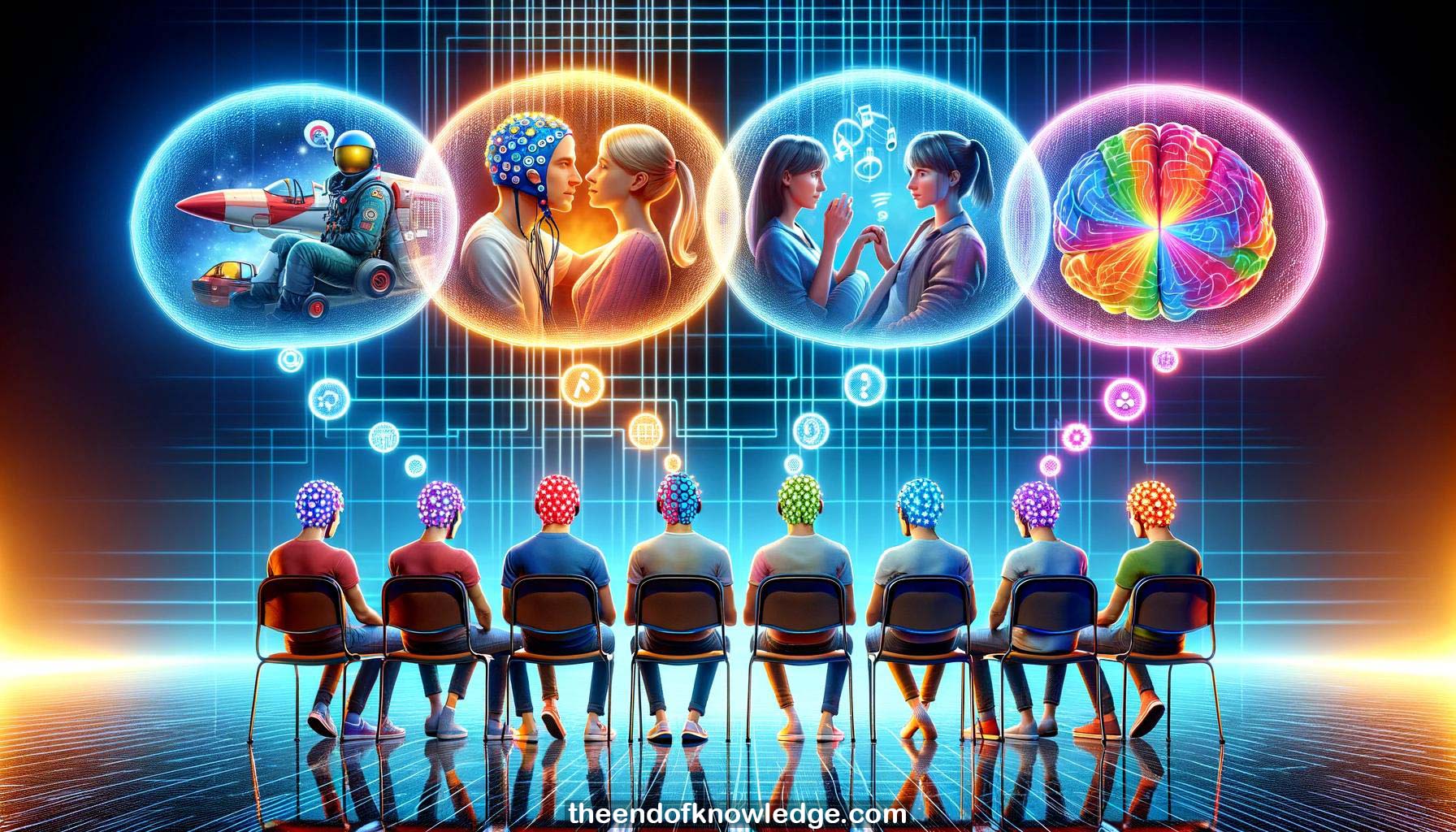 >
>
Concept Graph & Resume using Claude 3 Opus | Chat GPT4 | Llama 3:
Resume:
1.- Francisco presents hyperscanning experiments using G-Tech equipment with multiple subjects performing tasks simultaneously.
2.- Hyperscanning is the simultaneous recording of brain activity from two or more subjects who are interacting or performing the same task.
3.- Hyperscanning has applications in education (studying student performance), entertainment (audience engagement), healthcare, marketing, and social interaction studies.
4.- A 1965 study found synchronization of EEG activity between identical twins, demonstrating early interest in hyperscanning.
5.- G-Tech's setup includes EEG caps on subjects, a projection wall displaying tasks, and a PC processing the hyperscanning data.
6.- A 2016 study examined EEG synchrony between airplane pilots during takeoff, cruise, and landing while addressing an electrical fault.
7.- Hyperscanning can enhance accuracy in brain-computer interface applications by combining data from multiple users.
8.- In a 2013 G-Tech experiment, 8 subjects collaborated on a P300 speller task, achieving 100% accuracy after combining their data.
9.- At the 2022 spring school, a hyperscanning study was conducted with subjects in different rooms performing tasks like the D2 test.
10.- In today's live demo, 4 subjects with 8-channel caps will be recorded with a g.HIamp, and 2 with g.Nautilus.
11.- Subjects will perform a fixation cross resting task and a demanding visual attention task selecting specific targets within time constraints.
12.- Real-time engagement levels will be displayed for each subject based on their EEG during the resting and attention tasks.
13.- The experimental paradigm alternates between resting and attention tasks for 2.5 and 1 minute respectively, totaling around 15 minutes.
14.- Francisco sets up the 8-channel electrode caps on the 6 volunteer subjects, ensuring proper positioning and electrode contact.
15.- The Simulink model acquires 32 EEG channels (8 each from 4 subjects) from the g.HIamp and 16 channels from the g.Nautilus.
16.- Markers indicating the task state are sent via lab streaming layer (LSL) from the Unity paradigm to the Simulink model.
17.- The Simulink model applies filtering, separates EEG bands, extracts features, and trains an LDA classifier to detect attentional states.
18.- After the initial unclassified run, a script processes the data to train the LDA classifier for real-time classification.
19.- In the real-time feedback run, fluctuations in the classified attentional state align with the task periods.
20.- Stopping the attention task causes the classified attentional state to decrease, demonstrating the validity of the real-time EEG classification.
21.- The multi-device block in Simulink enables synchronization of multiple EEG streams without additional hardware triggering.
22.- LSL is used for lower bandwidth event markers, while high bandwidth EEG data is shared directly via memory in Simulink.
23.- Frankie is unsure if hyperscanning has been used with astronauts on the ISS, but suggests it would be interesting, even on the moon.
24.- G-Tech equipment will be used in a zero-gravity flight experiment in October.
25.- Hyperscanning has been used to study empathy, such as synchrony between mother and child or in response to emotional stimuli.
26.- Engagement is quantified by relative changes in EEG alpha and theta band power between attentional and resting states.
27.- The demo showcases the ease of setting up a complex 6-subject hyperscanning experiment in a short amount of time.
28.- Combining data from multiple subjects can improve BCI accuracy, even with a few poor performers, by averaging.
29.- Hyperscanning enables studying brain synchronization during social interactions like teamwork, between couples, twins, or parent-child dyads.
30.- The presentation demonstrates G-Tech's hardware and software tools for easily implementing hyperscanning experiments with real-time EEG processing and feedback.
Knowledge Vault built byDavid Vivancos 2024